Advent 2023 Round Up
Following on from the success of our first Web-Translations advent calendar last year, we thought it’d be rude not to create a new one this year! We’ve been sharing all the days on our social media.

This year’s advent calendar is full of various ways to say ‘Merry Christmas‘ around the world, as well as some of the traditions that take place. On social media, the team have been sharing short videos each day of the doors being opened. However, in case you’ve missed it, don’t fret! In this blog post we’ve collated all of our advent surprises and put together a complete Christmas countdown for you!
So, sit back and relax as we look back over our festive month! Also, don’t forget to check out our other festive blog posts including one all about our favourite international Christmas films!
Day One
First up, we started in Mexico!
Day Two
And for day two, we head over to China…
Day Three
After this, we moved to the French Caribbean island of Martinqiue…
Day Four
However, on day four we learnt Merry Christmas in German…
Day Five
Subsequently, we stayed in Germany and learnt about a German tradition…
Day Six
On day six, Hanukkah was celebrated!

Day Seven
On day seven, we wore our favourite cheesy Christmas jumpers in honour of Save the Children…

Day Eight
We travelled to the Netherlands…
Day Nine
Next, on day nine, we flew across the Atlantic to Barbados…
Day Ten
Next, we said Merry Christmas in Ukrainian…
Day Eleven
We stayed in Ukraine and learnt about Kutya…
Day Twelve
Following this, we headed south to Greece…
Day Thirteen
We explored the festive tradition in Ireland…
Day Fourteen
Then we went to Italy and learnt their festive saying…
Day Fifteen
We took a short trip to Switzerland and learnt about one of their traditions…
Day Sixteen
Joyeux Noël was our phrase on day sixteen…
Day Seventeen
We explored the Filipino tradition of Ligligan Parul…
Day Eighteen
Then on day eighteen it was international Arabic day…
Day Nineteen
We returned to interesting traditions with wafers on day nineteen…
Day Twenty
Then we remained in Poland and learnt Merry Christmas on day twenty…
Day Twenty One
We headed over to New Zealand for a barbeque on day twenty one…
Day Twenty Two
And we said Merry Christmas in Hungarian on day twenty two…
Day Twenty Three
On day twenty three we celebrated the Little Christmas in Norway…
Day Twenty Four
And last but not least, we said Feliz Navidad on day twenty four!
And that’s it! We hope you have enjoyed learning about festive traditions from all over the world! We’ve certainly loved it!
Thank you for taking the time to read our blog. We hope you have the most wonderful Christmas and a Happy New Year!!
See you in 2024! 🎉
Love,
The Web-Translations Team
Summer Solstice Festivities Around the World
We all love the Summer Solstice because it means that summer is here! The lovely light nights, the wonderfully vibrant gardens and of course, we can also hope for some sunny weather.
But when exactly is the summer solstice? It’s the moment when the path of the Sun is most north in the Northern Hemisphere and takes place between 20th and 21st June. Although it’s a lovely sign for us, do you celebrate this occasion? Today’s blog post is going to look into how the Summer Solstice is celebrated across the world.

1. Iceland
Thanks to its constant summer daylight, Iceland makes a great place to celebrate the summer solstice. Iceland’s Midnight Sun Race takes place around the summer solstice, so if you’re a runner, why not take a look at this race? You can enjoy Iceland’s beauty and diversity on foot! Iceland’s capital Reykjavik also hosts a celebration fit for party lovers with a range of both local and international music artists. It’s also the perfect opportunity to celebrate Iceland’s beautifully diverse landscape, and in 2018, the event featured a tour of an old lava tunnel, as well as an opportunity to party inside a giant glacier.
2. Canada
Next up, we have Canada! In Ottawa, the date of the summer solstice ties in with the celebration of the Indigenous people. The event showcases the Indigenous talent through music, dance, culinary workshops and much more to celebrate their culture and heritage. It is celebrated on “the traditional and unceded territories of the Algonquin peoples and their descendants”. The Indigenous Experiences’ Mādahòkì Farm is a rural space located in the greenbelt outside of Ottawa. This event is so important that during the pandemic it was transferred into a month-long virtual event.

3. Sweden
Now onto Sweden! The Midsummer Festival is a large celebration across Sweden celebrating Summer. Most Swedes will head from the cities to the countryside to spend time with their loved ones. Their celebrations are rather traditional, as they include:
- walking barefoot in the morning dew to encourage good health
- wrapping floral crowns around women’s hair to celebrate both beauty and fertility
- dancing around the summer maypole
- eating pickled herring and strawberries topped with whipped cream
Like the sound of this? Why not head over to Skansen museum to experience the traditional summer solstice celebration for yourself?
4. Alaska
Next is Alaska! In Alaska, they celebrate the summer solstice with a baseball game at Growden Memorial Park in Fairbanks. Baseball is a massively popular sport in Alaska and they hold this event every year on 21st June. This baseball game is particularly special because it’s played without using artificial lighting and only uses sunlight to light the stadium thanks to the midnight sun. The celebration also involves more than just the baseball game itself, as it’s a night of entertainment.
We’d love to hear how you’re celebrating the Summer Solstice this year, so be sure to get in touch on social media.
Advent 2022 Round Up
This December the Web-Translations team have been getting into the festive spirit by sharing their very own advent calendar on social media.

This advent calendar is full of lots of festive facts and it includes some of our favourite festive words as well as our favourite festive traditions. On social media, the team have been sharing short videos each day of the doors being opened. However, in case you’ve missed it, don’t fret! In this blog post we’ve collated all of our advent surprises and put together a complete Christmas countdown for you!
So, sit back and relax as we look back over our festive month! Also, don’t forget to check out our other festive blog post exploring all of our favourite international Christmas films!
Day One
First up, we started with stamps!
Day Two
And for day two, we continued the postage theme…
Day Three
After this, we moved to the advent theme on day three…
Day Four
However, on day four we learnt about an unexpected tradition…
Day Five
Subsequently, things got interesting as we talked about goats on day five! Yes … goats!
Day Six
Equally on day six, we continued the interesting theme and spoke about radishes!
Day Seven
On day seven we returned to normality and looked to vocabulary…
Day Eight
Movies were our focus on day eight…
Day Nine
Next, on day nine, we chose to stay close to home…
Day Ten
Candles took our fancy on day ten…
Day Eleven
And festive bops took to the scene on day eleven…
Day Twelve
Following this, the nativity took centre stage…
Day Thirteen
We explored Christmas giving on day thirteen…
Day Fourteen
Then we explored food on day fourteen … YUM!
Day Fifteen
Another film took to the scene on day fifteen…
Day Sixteen
But we were enchanted by apples on day sixteen…
Day Seventeen
Music once more entertained us on day seventeen…
Day Eighteen
Then on day eighteen we spoke about a well-known holiday…
Day Nineteen
We returned to interesting traditions with marzipan on day nineteen…
Day Twenty
Then we were fascinated by shoe-throwing on day twenty…
Day Twenty One
Another song came about on day twenty one…
Day 22
And money was the focus on day twenty two…
Day Twenty Three
Holidays were discussed on day twenty three…
Day 24
And last but not least, we learnt about an epic roller skating tradition on day twenty four!
And that’s it! We hope you have enjoyed learning about festive traditions from all over the world! We’ve certainly loved it!
Thank you for taking the time to read our blog. We hope you have the most wonderful Christmas and a Happy New Year!!
See you in 2023! 🎉
Love,
The Web-Translations Team
Christmas Films from Around the World
What’s your favourite Christmas film of all time? Struggling to think of just one? Well, that’s understandable! There are so many classic Christmas films that we can’t blame you for not being able to pick just one. After all, at Web-Translations, we certainly can’t!
Have you ever thought however that it might be time to mix it up a bit and find a new film that warms the cockles of your heart and makes you feel all fuzzy inside? Obviously these new films will never replace the classics you grew up with, but you might still love them nevertheless. And you never know, they may just become the classics of your future!
To give you some inspiration on where to begin, we’ve collated some of our favourite Christmas films from across the globe. Hopefully some of these will jingle their way into your hearts!
1. Noche de reyes (Spanish)
Directed by Miguel Bardem, this 2001 Christmas comedy is pure, light-hearted entertainment. It’s perfect for those who like hilarious comedies in which chaos and unfortunate events make your stomach hurt from laughing. It centres upon the adventures of the Cuspineda family whose father is going to sign a very important contract on Twelfth Night. In order to reach this contract however, it seems that everything is going to stand in their way. It’s utterly ridiculous and utterly marvellous.

2. Les bronzés font du ski (French)
We’ve all heard of National Lampoon’s Christmas Vacation. It’s a classic, that’s a fact. Have you ever heard of Les bronzés font du ski however? If you’re not French, then you probably haven’t but you should certainly change that! This 1972 comedy directed by Patrice Leconte is the French equivalent of National Lampoon’s Christmas Vacation and despite not being a hit when it was first released, it is now regarded as France’s eighth favourite film.
The film centres upon a group of friends who go on a skiing vacation in the French Alps. The film will make you laugh out loud as the protagonists run into a multitude of unfortunate mishaps. You are sure to soon regard it as one of your favourites!
3. 大停電の夜に (Japanese)
The third festive film we’d like to share with you is a Japanese film called Until the Lights Come Back. Evocative of films such as Love Actually in which the stories of multiple characters weave in and out, our third film centres upon the premise of what happens when the lights go out in Tokyo on Christmas Eve. It is simple, heart-warming and magical, and you will be sure to feel all festive inside after watching it!

4. Klaus (Spanish-American)
Our next festive pick is a Spanish-American animated family film directed by Sergio Pablos. The heart-warming tale offers an alternate origin story for Santa Claus and centres upon Jesper, a selfish postman who is forced to move to grey and gloomy town called Smeerensburg. Eventually teaming up with an isolated toy maker Klaus however, Jesper is able to spread joy to the faraway town, teaching that even the smallest act of kindness can spark another.
5. Malous Jul (Danish)
The final Christmas film we’d like to share with you is a Danish film directed by Claus Bjerre. The film centres upon a girl named Malou who, after living with several foster families ends up on the small island of Lunø with a family who loves Christmas. Malou is not so fond of the holiday however, so when she meets a grumpy elf who wants her to leave, they decide to cause as much trouble as possible to help her do so. Funny, magical and perfectly festive, you’re bound to love Malou’s Christmas.
These are just some of our favourite Christmas movies, we’d love to hear your favourites though! Be sure to get in touch on social media and share the festive cheer.
Best International TV Shows to Binge
With the nights drawing in and the festive season nearly upon us, you’re probably craving some good TV shows to snuggle down to. Yes, whether it be a cheesy rom-com or a creepy thriller, we could all do with a little bit of escapism right now. That’s why, in this blog post, we’ve put together some of our favourite international TV shows perfect for bingeing this November! We hope one of these takes your fancy!
Velvet (Spanish)
Fashion, romance, drama … that pretty much sums up our first recommendation. First released in 2014, this Spanish drama created by Ramón Campos and Gema R Neira follows an unlikely romance between a young seamstress and a fashion mogul’s son. It is set in 1950’s Madrid and it abounds in elegance, style and pure chic. There are plenty of twists and turns to keep you on the edge of your seat. And there are plenty of seasons to allow you to truly fall in love with the beauty of Velvet.
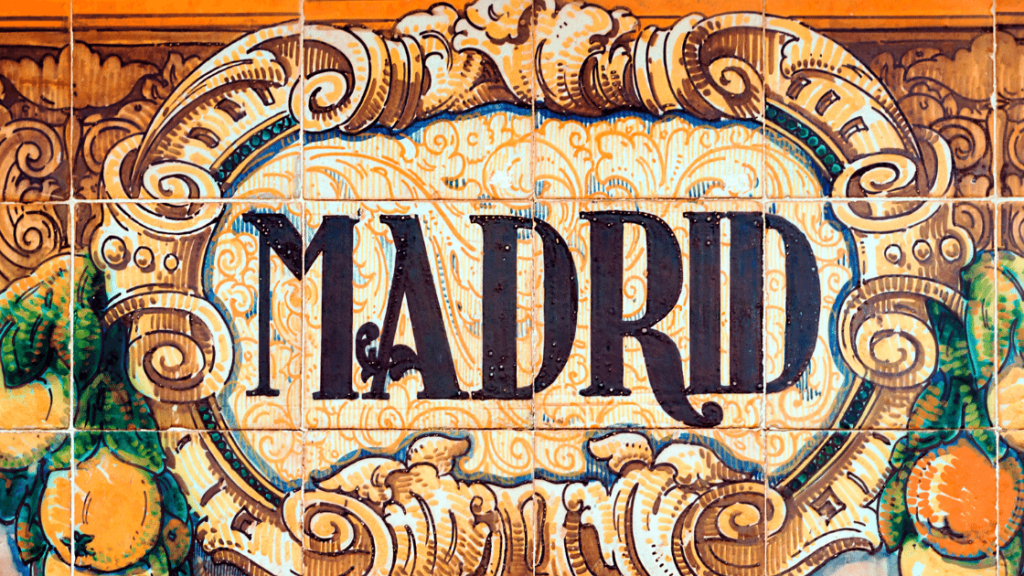
Ghoul (Hindi)
Our second recommendation is quite a contrast to our first as rather than exude a classic elegance, Ghoul would be better described as exuding pure terror. Created by Patrick Graham and set in a dystopian future, Ghoul is an Indian horror series which centres upon a folklore creature known as ‘Ghoul’. The show follows a young military officer named Nida Rahim. She is initially tasked with interrogating one of the most dangerous terrorists. However, all begins to unravel as she commences a battle for survival against supernatural forces one cannot begin to comprehend.
Dix pour cent (French)
The third international TV show we’d like to recommend may sound familiar to you and that’s because it is the original French version of the English comedy, Call my Agent. It follows the agents of a top Parisian talent firm after an unexpected crisis. It explores personal rivalries, client egos and financial difficulties and will leave you howling at the show’s wit and comedic excellence.

3% (Portuguese)
Our fourth recommendation is a little more serious than the former as we’re talking about Pedro Aguilera’s 3 %. 3% is a Brazilian dystopian series which is set in a future world in which the elite inhabit an island paradise far away from the rest of society. To join the elite few, the rest of the population receive one opportunity to partake in ‘The Process’, a series of challenges in which only three percent will succeed. Evocative of films such as The Hunger Games and Divergent, this series will keep you on tenterhooks.
Borgen (Danish)
If you’re looking for a more topical and political drama, then our next pick is certainly for you. Created by Adam Price and starring actors such as Sidse Babett Knudsen, Borgen depicts the fictional tale of Birgitte Nyborg, a woman who finds herself as Denmark’s first female leader. Featuring strong female characters and receiving multiple awards and subsequent adaptations, Borgen is certainly one to watch.
Biohackers (German)
The sixth series we’d like to recommend is certainly not for the faint of heart. Nonetheless it is perfect for those who like a good old, fast-paced thriller. Centring upon medical student Mia Akerlund, Biohackers will take you on a journey like no other as a family tragedy leads to an undercover mission that will grip you from the start. And of course, as with all of our recommendations, there’s plenty of twists and turns too!
Guida astrologica per cuori infranti (Italian)
If you’re a fan of Emily in Paris, then you’ll love Bindu De Stoppani’s An Astrological Guide to Broken Hearts. Adapted from the books of the same name, this series centres upon a woman named Alice who, heartbroken and single, befriends an astrological guru. Together they look to the stars to find her perfect match. Silly, heart-warming and a little bit gut-wrenching too, you’ll become addicted to this quirky rom-com.
We hope at least one of these picks has peaked your fancy! We’d love to hear your favourite international tv shows though! Why not let us know on social media?
Let’s Bring Cannes Film Festival to You!
This week is the 75th Cannes Film Festival, an annual event which previews new films of all genres. The festival’s purpose is to draw attention to film, celebrating cinema at an international level.
Composed of films from all over the world, it is a truly international festival which as a language agency, is something that we love!
In honour of such an occasion we wanted to help bring the Cannes Film Festival to you! That’s why we’ve collated a list of some of our favourite international films.

So, whack out your fanciest frock, bust out the popcorn and get ready to commence your very own Cannes Film Festival!
1. Ochos Apellidos Vascos
Released in 2014 and directed by Emilio Martínez-Lázaro, Ochos Apellidos Vascos is one of the best Spanish comedies out there. Within six weeks of its release, it became the second biggest box office hit ever in Spain. Pretty impressive don’t you think?
Known as ‘Spanish Affair’ in English, the story centres upon Rafa and Amaia. The former is a proud Andalucian who has never left his native Seville and the latter is an equally proud girl from the Basque Country. Having discovered that Amaia left her purse in Seville following a night out with her friends, Rafa decides to pursue Amaia to her native Basque Country to return her belongings.
However, as a series of misunderstandings unfurl, Rafa is forced to feign a Basque identity, concocting an elaborate series of eight Basque surnames – hence the film’s literal English title: ‘Eight Basque Surnames’. As he becomes more and more entangled in his lies, a film of comedic farce ensues which is thoroughly entertaining.
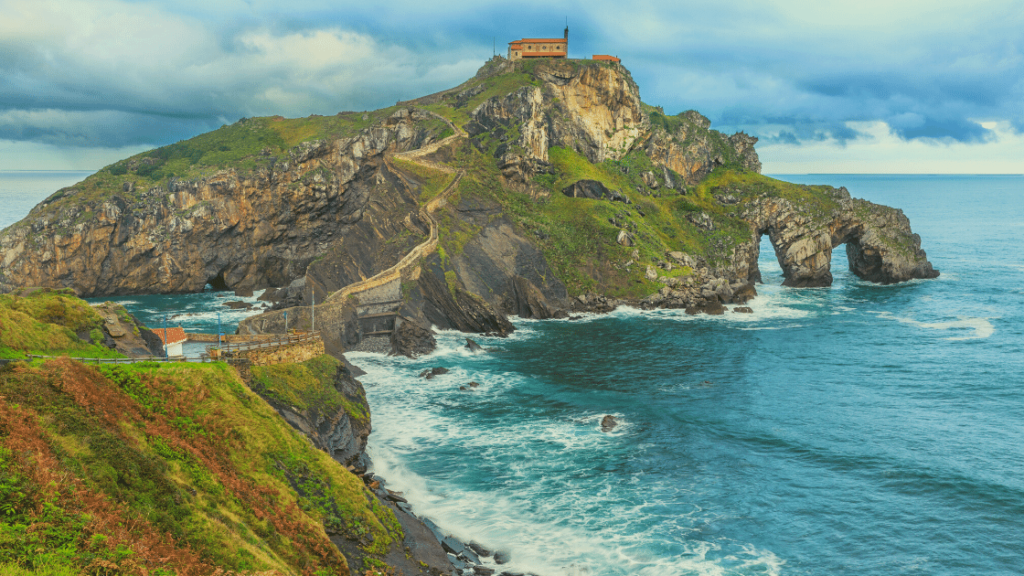
Funny, light-hearted, and endearing, you’re bound to laugh with this film.
2. 기생충
Our second movie recommendation is the South Korean film Parasite. Not merely did this win the Palme d’Or at the 2019 Cannes Film Festival, but it also won the Academy Award for Best Picture. It became the first non-English language film to win such an accolade.
Labelled as both a black comedy and psychological thriller, Parasite follows the poor Kim family who scheme to become employed by the wealthy Park family. Infiltrating their household by posing as highly qualified individuals, greed and class discrimination soon come to the fore and threaten the seemingly symbiotic relationship.
It’s perhaps a little darker than our previous pick. But if you’re looking for a film to sink your teeth into, this is certainly the one to watch!
3. El laberinto del fauno
It is unlikely that you’ve never heard of our next choice. Released in 2006 and directed by Guillermo del Toro, El laberinto del fauno (Pans Labyrinth in English) is a critically acclaimed Mexican film that premiered at the 59th Cannes Film Festival.
Exploring both a magical realist world as well as the horrors of Falangist Spain, El laberinto del fauno centres upon an 11-year-old girl named Ofelia. Ofelia travels with her pregnant mother to the countryside. Here she meets her new stepfather, a sadistic captain of the Spanish army.
Furthermore, upon arrival, she meets a faun in the centre of a labyrinth. A faun that informs her that she is a princess. Tasked to prove her royalty by performing three tasks, Ofelia enters a world of mythical beings that albeit frightening, bears little to the sadistic horrors taking place outside of the magical realm.

Del Toro’s work won a multitude of international awards including three Academy Awards. It is magical, distressing, and yet enticing. It is simply a film you must watch.
4. Les Choristes
Known as The Choir in English, Les Choristes is a 2004 French musical drama directed by Christophe Barratier.
The film centres upon a French boarding school in the late 1940s. Although its students and teachers are constantly at odds, everything changes with the arrival of a music teacher, Clément Mathieu. Starting a choir, Clément attempts to change the school’s reactionary policies. He particularly impacts a young boy named Pierre, someone who shows great musical promise.
Full of whit, drama, and stunning original music, you are bound to be encaptivated by Barratier’s work.
5. La vita é bella
La vita é bella (Life is Beautiful) is a 1997 Italian comedy drama directed by Roberto Benigni. The film is one of the highest grossing non-English language films of all time. It won the Grand Prix at the 1998 Cannes Film Festival.
The film centres upon Guido Orefice, a Jewish Italian bookshop owner who utilises his prolific imagination to protect his son from the reality of internment within a concentration camp. Inspired by the novel, In the End, I Beat Hitler, the film wields elements typical of both soul-stirring romantic comedies and grittier historical genres.
It is truly stunning. Upon watching the masterpiece, you will laugh, and you will cry. You will hate and you will love. La vita é bella is a film which sticks with you and rightly so. Its origins in history make the film tug at your heart strings more so than most, but despite the sorrow, one cannot deny that it truly makes you believe that life is beautiful.
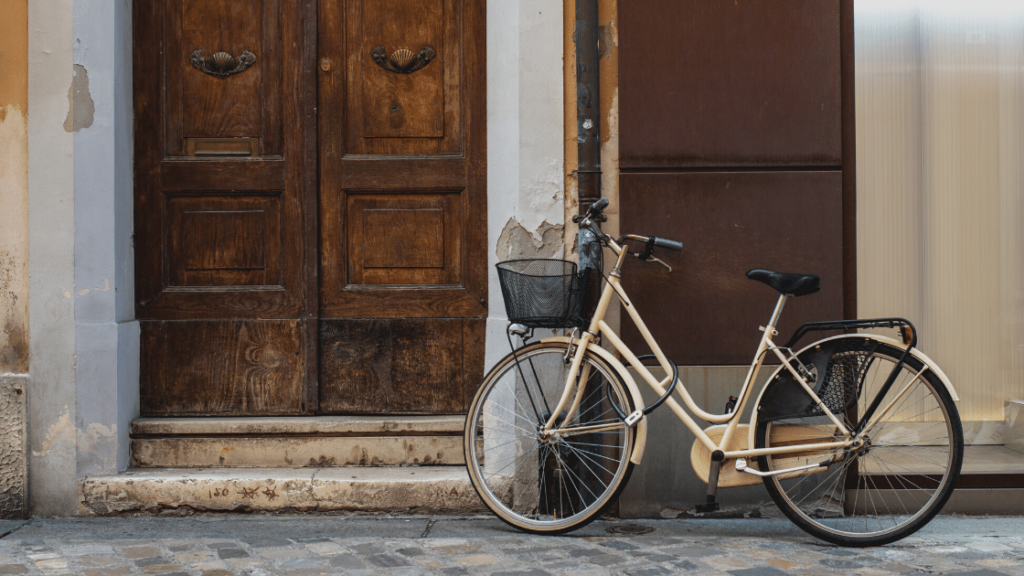
What is more it makes your heart forever warm upon hearing the infamous words ‘Buongiorno Principessa’. It may make it ache a little too, but it will warm, nonetheless.
These are just a few of our favourite international films. We’d love to hear your top picks, however! Get in touch via social media to share your favourite foreign language films!
Eurovision Throwback
Craving a fix of dramatic ballads and smashing bops? Well in you’re in luck because very shortly the Eurovision Song Contest will be gracing our screens once more!
Yes, bust out the flags and get your groove on because it’s our favourite time of year. To get us in the Eurovision spirit, we’ve compiled a list of some of our favourite Eurovision songs.
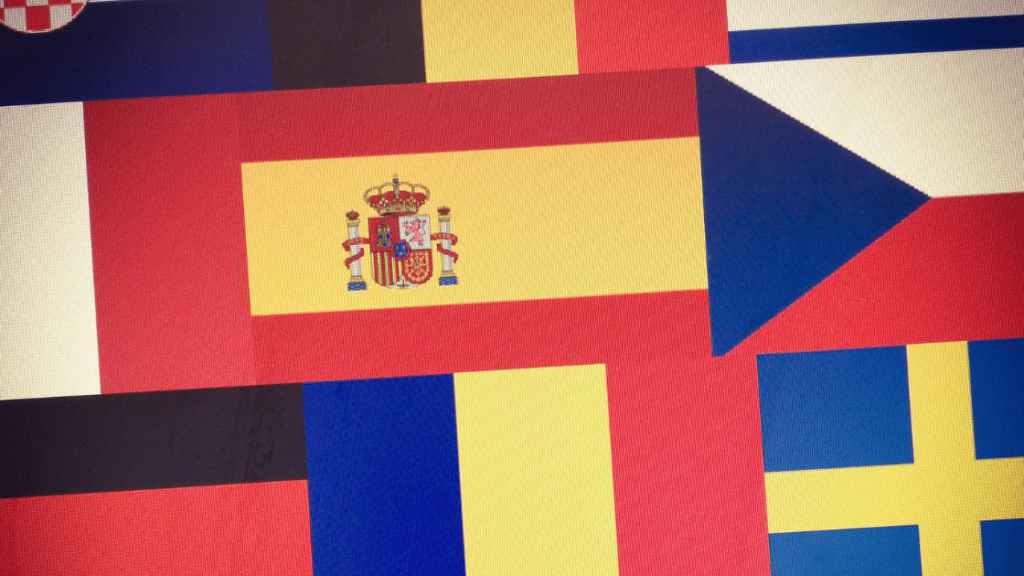
From heartfelt Spanish ballads to Danish bops, you’re bound to love these Eurovision hits!
1. Historyja Majho Zyccia by Naviband
Our first Eurovision throwback is Belarusia’s 2017 song entry by Naviband. After failing to qualify for the Grand Final in both 2015 and 2016, Naviband took to the stage to represent Belarus with this sweet and charismatic folk tune.
It only came seventeenth in the Grand Final, but we’re sure you’ll love hearing the story of their life.
2. Divlji Vjetre by Damir Kedžo
We’ll hold our hands up here and admit that our second Eurovision throwback isn’t technically a throwback. Chosen to represent Croatia at the 2020 Eurovision Song Contest, Damir Kedžo never received the opportunity to perform his song as the contest was cancelled due to the pandemic. Despite this however, it is still a fantastic song and one that should very much be listened to on repeat.
3. Øve os på hinanden by Fyr & Flamme
Next up on our list of throwbacks is Denmark’s 2021 entry to the Eurovision Song Contest. Although it never made it to the Grand Final, only coming in 11th position in their semi-final, Fyr & Flamme’s song certainly is one that makes you want to bust your best moves. What is more, as the first song since 1997 to be sung entirely in Danish at the contest, it is equally a landmark song which should be praised.

4. Työlki Ellää by Kuunkuiskaajat
Our fourth choice of song is another hit that never graced the stage of the Grand Final. Representing Finland in the 2010 Eurovision Song Contest, Kuunkuiskaajat performed their traditional folk song and captured the hearts of many, coming 6th in the televote at their semi-final.
Fun, traditional and simple, Työlki Ellää is a breath of fresh air amongst the extravagance of Eurovision and for this reason it should be celebrated.
5. Voilà by Barbara Pravi
As France’s most successful entry in Eurovision since 1991, Barbara Pravi’s performance of Voilà is certainly worth a throwback to. Coming in second place with 499 points, France’s entry in the 2021 Eurovision Song Contest explored the story of Pravi’s self acceptance. Minimalistic, elegant and emotionally charged, Voilà is stunning.
6. Sebi by Zala Kralj & Gašper Šantl
With an English title of ‘Oneself’, Slovenia’s entry to the 2019 Eurovision Song Contest is a lo-fi tune all about staying true to yourself. Performed by the duo Zala Kralj & Gašper Šantl, this throwback is certainly a chilled one and is bound to make you feel all nice and relaxed.
7. Quédate Conmigo by Pastora Soler
Our final Eurovision throwback is Spain’s 2012 entry, Quédate conmigo. Powerful, heart-breaking and breathtaking, Soler’s performance is typical of the dramatic love ballads you see being performed at Eurovision. However, with vocals of an unbelievable calibre and a melody that has the potential to wiggle its way into your brain, you are guaranteed to be singing this song on loop once you’ve listened to it!
These are just some of our favourite Eurovision songs. We’d love to hear your favourite tunes, though! Get in touch via our social media to keep this discussion going!
Easter Traditions from Around the World
Whether it goes by the name of Semana Santa, Pasqua or Ostern, Easter is certainly a holiday that is celebrated by many across the world. Regardless of whether celebrations assume a religious character or simply favour the consumption of chocolate eggs, it is certainly fun for all.
However, besides religious gatherings and hunting for Easter eggs, did you know that there are a plethora of bizarre and wonderful activities that are held across the world in honour of Easter?
No? Well don’t fret. In this blog, we’re going to explore just a few of these traditions. Ranging from kite flying to crime novel reading, you’re certainly in for a treat!
1. Easter Kites in Bermuda
Every Good Friday, Bermuda holds a KiteFest. Taking place on Horseshoe Bay Beach, many gather to exhibit and fly their homemade and brightly decorated kites.
Confused as to what this has to do with Easter? The story goes that a local Sunday school teacher taught pupils about Christ’s ascension by flying a kite which represented Jesus.

2. Colourful Carpets in Antigua
In preparation for the Good Friday procession, artists cover the streets with colourful carpets in Antigua, Southern Guatemala. Artists make the carpets out of flowers, sawdust, fruit, vegetables and sand. Normally, the scenes depict something which holds personal meaning to the artist.
3. Easter Breadmaking in Poland
It is tradition in Poland for women to bake a traditional Easter bread. Although men may wish to participate, the tradition states that if a man were to get involved, their moustache would turn grey, and the dough wouldn’t rise! It’s a strictly female activity, therefore.
4. Easter Fireworks in Florence
Known as ‘Scoppio del Carro’, this tradition takes place in Florence, Italy on Easter Sunday. It translates to mean ‘Explosion of the cart’ and the tradition sees people dress in fifteenth century clothing, fill a cart with fireworks and lead it through the streets.
Once it reaches the Duomo, the cart stops and the Archbishop of Florence lights a fuse during the Easter mass. This creates a beautiful firework display. The tradition is said to bring a good harvest and it dates back to the First Crusade.
5. Omelettes in Haux
On Easter Monday, a giant omelette is served up in the main square of Haux, France. Feeding up to 1,000 people, the omelette uses more than 15,000 eggs!!!
The reason for this tradition is Napoleon. It is believed that when Napoleon travelled through the south of France, he stopped in a small town and ate omelettes. Given that he enjoyed the omelettes so greatly, he asked the village to gather all of their eggs and make a gigantic omelette for his entire army the next day. We’re not entirely sure why it had to be one gigantic omelette, but you can’t deny that it makes for a good tradition!
6. Egg Rolling in Scotland
On Easter Sunday, many families in Scotland participate in an egg rolling contest. After decorating their hard-boiled eggs, the families roll their eggs down a hill. The egg that travels the furthest distance without breaking is the winner.
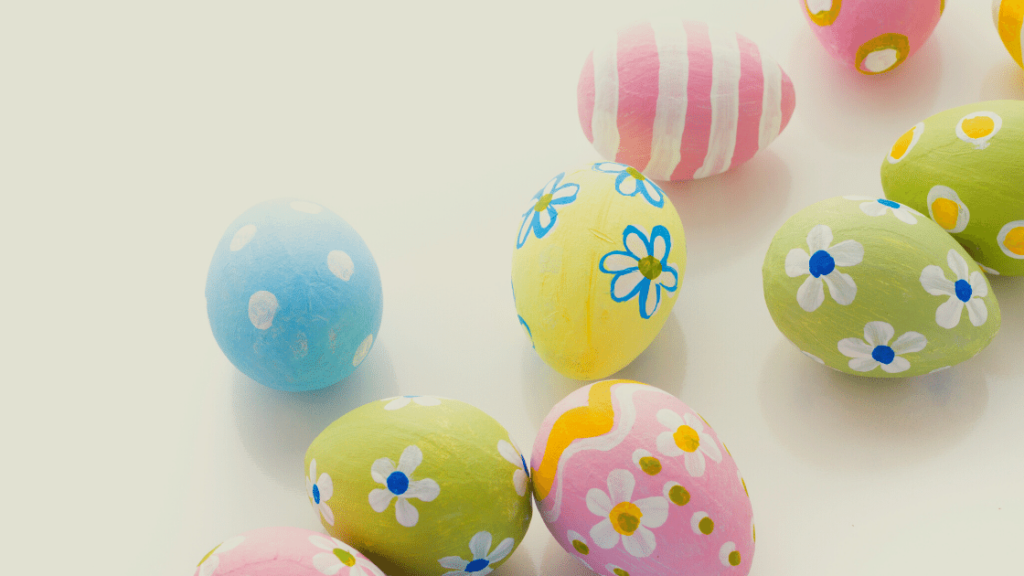
7. Easter Crime Novels in Norway
And finally, we have perhaps the most unique tradition yet: reading crime novels at Easter.
In Norway, Easter is an incredibly popular time to curl up and read a crime novel. ‘Why?’ you might rightly ask. Well, this tradition dates back to 1923 and to a remarkably successful publicity stunt. On the 24th of March, an Oslo newspaper printed the headline: ‘The train to Bergen was robbed last night’. Upon reading this title, the news of a supposed robbery spread like wildfire.
However, the headline wasn’t true. It was rather the title of a novel written by Nordahl Grieg and Nils Lie. Although no robbery had taken place, the novel received a large degree of publicity and thus acquired a large readership. The association between Easter and crime fiction was consequently born.
We hope you enjoyed reading about all of these Easter traditions! We’d love to hear some of your favourite traditions though! Get in touch via our social media channels to keep this discussion going!
Fancy learning about more cultural events? Why not check out our February Festivities blog or our post exploring Geneva’s tradition of Escalade?
February Festivities
Feeling sad that the festive season is over? Well, at Web-Translations we want to help you turn that frown upside down by exploring some of the festivities February has to offer!
Yes, don’t be fooled, February offers more than simply Valentines Day. All over the world, people are celebrating special days with loved ones and eating mountains of traditional food.
In this blog, we’re going to introduce you to a few of our favourite celebrations.
Chinese New Year
Most of you will have heard of Chinese New Year. Also known as the Lunar New Year, it is the festival that celebrates the beginning of the traditional lunisolar Chinese calendar.
Although the celebration traditionally lasts for 16 days, this year, the Chinese New Year will specifically fall on Tuesday 1st February, and it will welcome the year of the Tiger. (You can read more about the Year of the Tiger here: https://www.chinahighlights.com/travelguide/chinese-zodiac/tiger.htm)
There are lots of traditional activities that can take place during the New Year celebrations. For example:
- ‘Sweeping away the dust’: In other words, on the 24th day of the 12th lunar month, it is custom to clean your house.
- Decorations: Despite some choosing to decorate their houses before the festival, many choose to decorate on Chinese New Year’s Eve. Moreover, these decorations are often red. This is because red is thought to warn off negativity and promote prosperity.
- Offerings: It is custom to offer sacrifices to your ancestors to show respect and piety.
- Reunion Dinner: The New Year’s Eve reunion dinner is a “must-do” dinner with all family members reuniting. Traditional cuisine includes fish, dumplings, Nian Gao (sticky rice cake), and spring rolls. Following the dinner, children receive red envelopes containing money in order to bring good fortune.
- Fireworks: On Chinese New Year’s Day, there is a cacophony of fireworks all around. It is also common to watch lion and dragon dances.

Candlemas
Candlemas is a public holiday in Liechtenstein, held on the 2nd of February. Also known as the Feast of the Presentation of Jesus Christ, the celebration is a Christian holiday that commemorates the presentation of Jesus Christ at the temple.
Although it is customary for Christians in some countries to remove their Christmas decorations on 12th Night, many choose to wait until Candlemas to remove their decorations. Furthermore, it is tradition to take a candle to church. This candle is then blessed and brings families luck throughout the rest of the year.
La Chandeleur
On the 2nd of February, France observes ‘La Chandeleur’. This is also known as Candlemas, but its origins are in an older pre-Christian holiday which celebrates harvest and marks the mid-point of Winter.
Nowadays, the day centres upon both of these traditions, but it also centres upon the crêpe! Yes, you heard right, the crêpe is the pièce de résistance! Embodying a circular shape, it represents the sun and the circle of life. The act of eating and sharing food also honours the pope giving out food to the poor every year.
Furthermore, one cannot forget that it’s a very superstitious day. To foresee financial luck, some believe that you should hold a coin in one hand and flip the crêpe in another without it falling.

El Entroido de Verín
This celebration is a Galician festival that occurs in the locality of Verín each year. The Pagan celebration dates back centuries and it bids farewell to the cold days of winter. With the arrival of Christianity, it was then mixed with saying farewell to meat before Lent.
This year, festivities will begin on the 17th of February (a day known as Xoves de Compadres) and end on the 1st of March (Martes de Entroido). Different days see different activities take place but some of the principal activities include flour fights, masked balls, and processions with fireworks.
It truly is one of the most vibrant and exciting festivals. From cigarrones (masked men who run through the town encouraging people to join the celebrations) to fariñadas (flour fights in the Plaza Mayor), you can’t help but be enticed by the celebrations.
Maslenitsa
Seven weeks before Easter are the week-long Maslenitsa festivities in Russia. Once again combining the Pagan tradition of marking the transition between winter and spring with the Christian tradition of feasting before Lent, Maslenitsa takes place between the 28th February and the 6th of March.
Also known as Butter Week and Pancake Week, Maslenitsa brings a range of activities. For example:
- Children make Maslenitsa dolls from straw and old clothes which are then burned on the final day. People then jump over the bonfires made as a result.
- It is custom for everyone to make and eat blinis, which are traditional pancakes.
- Many go sledging and of course it wouldn’t be Maslenitsa without lots and lots of singing!!!
These are just five of the many, many festivities that occur across the globe in February. We’d love to hear what festivals are celebrated in your culture throughout February, though! Get in touch via our social media.
A name of two halves? Not in Brazil…
It’s difficult to argue that football is not a truly international sport. The conventions used around the world to name players, however, vary widely, and serve as a useful reminder that you can’t directly translate one word into its foreign equivalent. Different cultures express things in different ways – in fact they often express subtly different things full stop. In trying to explain the differences we come across a number of the social, cultural and economic factors that influence language.
When I was at primary school there was a persistent belief in the playground that Brazilian footballers only had one name. I understand where it came from – some of the greats have been known by one word: Pelé, Zico, Ronaldinho (Ronaldinho Gaúcho in Brazil). (more…)




